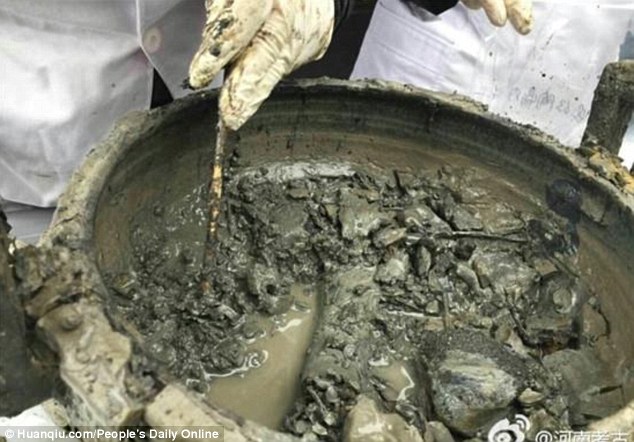In a captivating find near Xinyang, China, archaeologists have uncovered a clay pot that dates back 2,300 years, containing the forelegs of a cow. This ancient artifact, discovered within a tomb chamber, provides an intriguing look into the customs and traditions of the Chu kingdom, which thrived in central and eastern China from 1,100 BC to 223 BC. The discovery of cow bones inside the pot prompts questions about their significance, leading to various theories and ongoing studies.
The Discovery of the Ancient Pot
The sizable clay pot was found in a tomb chamber close to Xinyang. Upon investigation, archaeologists identified its contents as cow foreleg bones. This rare find has generated considerable intrigue and discussion among experts. The exact role of these bones in the tomb remains unclear, with some humorously suggesting they might be leftovers from an ancient beef stew, offering a light-hearted take on the discovery.
Despite these amusing speculations, the real meaning and intended use of the cow forelegs within the burial practices of that era are still being explored. Researchers aim to determine whether these bones were part of a ritual, a symbolic offering, or another element of ancient funerary customs.

The Significance of the Ding
The clay pot is recognized as a “ding,” a type of ancient Chinese vessel known for its unique design. Characterized by sturdy tripod legs that elevate it above the ground, a lid on top, and loop handles on the sides, dings were originally made of clay before transitioning to bronze as metalworking techniques advanced. This shift reflected the growing importance of these vessels in ceremonial contexts.

Initially designed for cooking over an open flame, dings evolved in purpose over time, becoming more associated with ceremonial and ritual functions. Bronze dings were frequently used in sacrificial ceremonies, serving as containers for offerings to gods or ancestors.
Finding a ding in a tomb is a strong indicator of the deceased’s high social standing. In ancient China, the presence of a ding among burial items suggested that the individual was of considerable importance or prestige. The more dings located in a tomb, the higher the perceived status of the person buried there, making this discovery significant for understanding both the historical and ceremonial value of the artifact as well as insights into social hierarchies of that time.
The Condition of the Tomb and the Ding
The tomb where the ding was located was in a deteriorated state, suffering from severe water damage. Muddy water was found within the ding itself, requiring careful extraction and transport to a laboratory for thorough analysis. Delicate handling is essential to preserve the artifact and avoid further harm.

Current hypotheses regarding the purpose of the cow bones suggest they may have been used for cooking or as part of a burial rite involving sacrificed animals. Ongoing tests aim to determine if the pot was utilized over an open flame, indicating it had a cooking function, or if it served to transport slaughtered animals for burial rituals.
Historical Context and Comparisons
Dings hold significant importance in ancient Chinese culture due to their ceremonial and practical roles. The Si Mu Wu Giant Rectangular Ding is one noteworthy example, prominently displayed at the National Museum of China in Beijing. This impressive bronze ding stands 133 cm (52 inches) tall with wall thicknesses of 4 cm (1.6 inches) and weighs an astonishing 832 kg (1,834 pounds).

As one of the largest and heaviest dings ever discovered, it was unearthed in 1939 in a small village in Henan province. Its massive size highlights the importance and grandeur of dings in ancient Chinese society. Such large and intricately designed dings not only served as cooking vessels or for offerings but also symbolized their owners’ wealth and status. The Si Mu Wu Ding exemplifies both exceptional craftsmanship and the ceremonial importance attributed to these ancient vessels.
Conclusion
The unearthing of this 2,300-year-old pot with cow forelegs provides a unique perspective on the burial practices and societal structures of the ancient kingdom of Chu. As archaeologists continue their analysis of the ding and its contents, we may gain further insights into the rituals and everyday life during this intriguing period in Chinese history.

